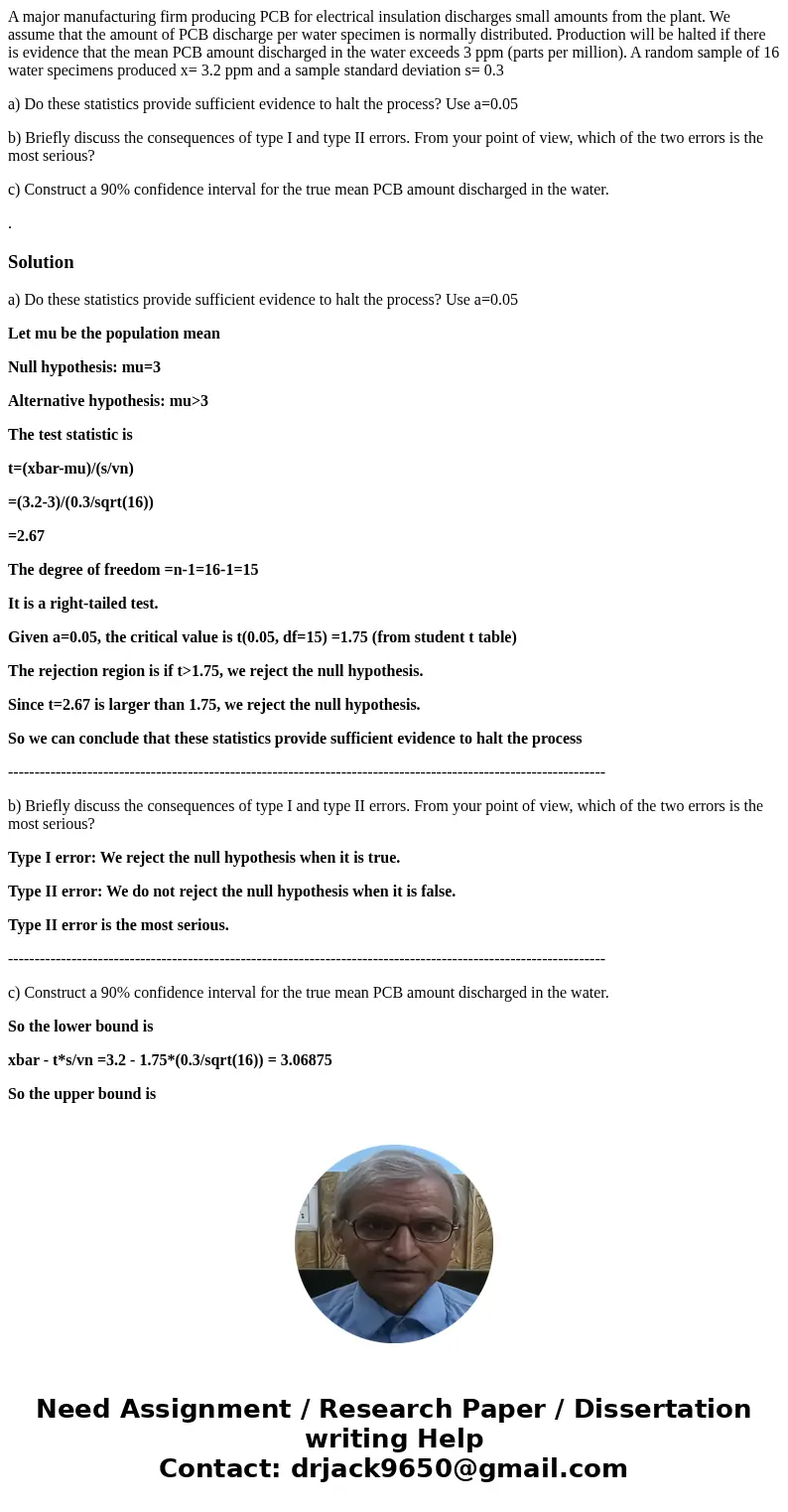A major manufacturing firm producing PCB for electrical insu
A major manufacturing firm producing PCB for electrical insulation discharges small amounts from the plant. We assume that the amount of PCB discharge per water specimen is normally distributed. Production will be halted if there is evidence that the mean PCB amount discharged in the water exceeds 3 ppm (parts per million). A random sample of 16 water specimens produced x= 3.2 ppm and a sample standard deviation s= 0.3
a) Do these statistics provide sufficient evidence to halt the process? Use a=0.05
b) Briefly discuss the consequences of type I and type II errors. From your point of view, which of the two errors is the most serious?
c) Construct a 90% confidence interval for the true mean PCB amount discharged in the water.
.
Solution
a) Do these statistics provide sufficient evidence to halt the process? Use a=0.05
Let mu be the population mean
Null hypothesis: mu=3
Alternative hypothesis: mu>3
The test statistic is
t=(xbar-mu)/(s/vn)
=(3.2-3)/(0.3/sqrt(16))
=2.67
The degree of freedom =n-1=16-1=15
It is a right-tailed test.
Given a=0.05, the critical value is t(0.05, df=15) =1.75 (from student t table)
The rejection region is if t>1.75, we reject the null hypothesis.
Since t=2.67 is larger than 1.75, we reject the null hypothesis.
So we can conclude that these statistics provide sufficient evidence to halt the process
-----------------------------------------------------------------------------------------------------------------
b) Briefly discuss the consequences of type I and type II errors. From your point of view, which of the two errors is the most serious?
Type I error: We reject the null hypothesis when it is true.
Type II error: We do not reject the null hypothesis when it is false.
Type II error is the most serious.
-----------------------------------------------------------------------------------------------------------------
c) Construct a 90% confidence interval for the true mean PCB amount discharged in the water.
So the lower bound is
xbar - t*s/vn =3.2 - 1.75*(0.3/sqrt(16)) = 3.06875
So the upper bound is
xbar + t*s/vn =3.2 + 1.75*(0.3/sqrt(16)) =3.33125


 Homework Sourse
Homework Sourse